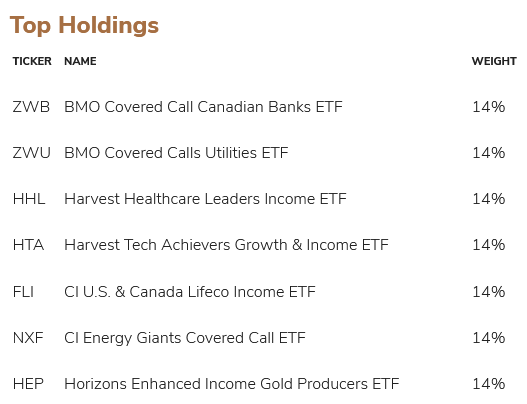The chase for investment returns in our zero interest rate environment incentivizes the creation of all sorts of financial products to give one the perception of yield.
Indeed, I can promise you today a 10% yield. Just give me $100 and I will give you a 10-year yield of 10% a year, starting with a 10% distribution 365 days from now. Boom, guaranteed yield!
But hold on, it isn’t enough that I hold onto your capital for a decade, I want to charge some management expenses.
So how about you give me $100 today, and I’ll give you a target 8.5% yield. That might change if I can’t actually generate the returns, or if I can’t find more people to give me money to pay you.
A good example of yield-promotion financial instruments are split-share corporations, which appear to no longer be in vogue. There has to be new financial products that promote high yields!
Cue in the marketing geniuses at Hamilton, who have spammed the media with their “Target yield of 8.50% with monthly distributions” fund!
I couldn’t resist looking at the detail of the financial wizardry to make it happen.
This is a fund-of-funds:
And the strategy: “The fund seeks to replicate a 1.25 times multiple of the Solactive Multi-Sector Covered Call ETFs Index (SOLMSCCT), comprised of equal weightings of 7 Canadian-listed sector covered call ETFs.”
In other words, there is some person that puts in a buy order for 7 ETFs, and does it with 20% margin (i.e. buy $125 of funds with $100 of equity).
The geniuses at Hamilton don’t even have to program any software to manage the covered calls or the index balancing – they leave it to the constituent funds to doing so. The fine-print prospectus references a semi-annual rebalancing to equal-weight the funds, and to keep the leverage between 123% to 127%.
The 8.5% indicated yield is not in the prospectus, but it is clearly the marketing pitch. 8.5% divided by 1.25 is 6.8%, which is the basis for this yield claim.
For this, they charge 65 basis points.
A pretty good business for them.
I find this phenomena of covered call ETFs and the promotion of covered calls to be highly over-rated. Most retail people perceive covered calls to be free money (“even if I do get called out, it is at a price that I would have wanted to sell anyway”), but there is a significant exchange of future upside capital appreciation for a “yield” today. This yield is not free, especially during times of low volatility. Implied volatility of options tend to drop when the underlying price appreciates, and vice-versa. The best time to get the highest option yields (when implied volatility is the highest) is typically during a market crash, which is precisely the time you do not want to be selling the capital upside of equities.
Conversely, at that exact moment tends to be the ideal time to sell put options, but few people in the heat of a market crash want to do so, and indeed, selling puts during a market crash is not the most financially productive activity since the amount of upside you capture is limited to the put premium. There is no free lunch in this game although slick marketing makes it appear to be the case.
The TSX 60 currently yields around 2.7%. At 125% leverage, it would yield around 3.4% ignoring the interest cost. If you got rid of Shopify (about 10% of the index now!) that yield rises to about 3.7%. Is it a stretch to think the capital component of the TSX will rise 5% in the future? Maybe. But the sale of 2-month at-the-money covered calls on the TSX right now is 1.4% and that more or less locks in a (unleveraged) 4% return with only capital downside. The 2-month covered call option yield if you wish to retain about 2% capital upside is about 40 basis points. When you include a friction of 65bps MER, I don’t see how the math works at all.
